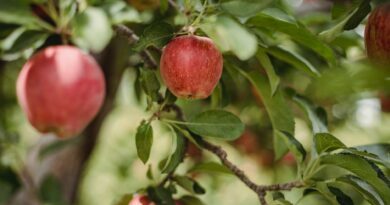Growing Mint on Your Allotment: A Guide to Varieties, Care, and Culinary Uses
Mint is an aromatic herb that is widely known for its refreshing taste and its various health benefits. It is a common ingredient in many dishes, particularly in Middle Eastern, Indian, and Mediterranean cuisine. Mint is also a versatile herb that can be used in cocktails, teas, and desserts. Moreover, it is easy to grow and requires minimal care, making it a popular choice for allotment gardeners.
Allotment gardening, on the other hand, refers to the practice of cultivating crops and plants in small plots of land, typically rented from local councils or private landowners. Allotments provide people with the opportunity to grow their own produce, connect with nature, and promote sustainable living. Allotment gardening is a popular pastime in the UK, where there are over 300,000 registered plots.
Varieties of Mint
There are several varieties of mint that are suitable for allotment gardening. Here are some of the most common ones:
- Peppermint – This variety has a strong, refreshing flavor that is ideal for teas, cocktails, and desserts.
- Spearmint – Spearmint has a milder taste than peppermint and is often used in savory dishes, such as salads and stews.
- Chocolate mint – This variety has a distinctive chocolate flavor that pairs well with desserts.
- Pineapple mint – As the name suggests, this mint has a sweet, pineapple-like taste that is perfect for summer cocktails.
Growing Guide
Mint is a hardy perennial herb that can grow up to 60 cm tall. Here is a step-by-step guide on how to grow mint on an allotment:
- Choose a sunny or partially shaded spot – Mint prefers well-drained soil and can grow in most types of soil, but it thrives in moist soil.
- Prepare the soil – Remove any weeds or debris from the soil and add some compost or well-rotted manure to improve soil fertility.
- Plant the mint – You can either plant mint seedlings or propagate mint from cuttings. To plant seedlings, dig a hole that is slightly larger than the root ball and place the seedling in the hole. To propagate from cuttings, snip off a stem that is at least 10 cm long and remove the leaves from the bottom half. Plant the cutting in a pot filled with soil and water it thoroughly.
- Water the mint – Mint needs to be watered regularly, especially during hot and dry weather. Be careful not to overwater the mint, as this can lead to root rot.
- Harvest the mint – You can start harvesting the mint leaves when the plant is about 10 cm tall. Pick the leaves from the top of the plant and use them fresh or dried.
Health Benefits
Mint has several health benefits that make it a valuable addition to any diet. Here are some of the benefits of consuming mint:
- Promotes digestion – Mint contains compounds that help to stimulate the production of digestive enzymes, making it easier to digest food.
- Relieves nausea – Mint has a calming effect on the stomach and can help to alleviate nausea and vomiting.
- Improves respiratory health – Mint contains menthol, which can help to open up the airways and improve breathing.
- Reduces inflammation – Mint has anti-inflammatory properties that can help to reduce inflammation in the body.
Meal Ideas
Mint is a versatile herb that can be used in a wide range of dishes. Here are some ideas on how to use mint in your cooking:
- Mint tea – Simply steep fresh mint leaves in boiling water for a refreshing and soothing drink.
- Mint pesto – Blend fresh mint leaves with garlic, pine nuts, and olive oil to make a delicious mint pesto that pairs well with pasta or roasted vegetables.
- Mint yogurt sauce – Mix chopped mint leaves with yogurt, lemon juice, and salt to make a tangy and refreshing sauce that is perfect for dipping vegetables or spreading on sandwiches.
- Mint and pea soup – Blend cooked peas with fresh mint leaves, vegetable stock, and cream for a flavorful and creamy soup.
- Mint and feta salad – Toss chopped mint leaves with crumbled feta cheese, cherry tomatoes, cucumber, and olive oil for a refreshing and colorful salad.
- Mint-infused cocktails – Use fresh mint leaves to add a burst of flavor to your favorite cocktails, such as mojitos or mint juleps.

Growing mint on an allotment is a great way to enjoy this versatile herb’s various benefits and add flavor to your meals. With minimal care and a little bit of attention, you can grow your own mint and experiment with different varieties and recipes. So, why not give it a try and see for yourself the joys of growing mint on your allotment?




